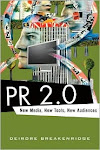
I must say this session was real fun. The subject was about feminisation of PR and diversity issues. To begin with, the course tutor, Michaela O'brien asked us to think about what makes a man and a woman.
It was interesting to hear classmates name characteristics attributed to Masculine such as: leader, ego, dominant, independent, objective, hunter and assertive. Some of those associated with feminine according to my peers include: emotional, sensitive, tender, soft, creative and adoptable.
The aim behind this was to show how society associates some of these characteristics with different sexes. After deliberations, students realised that some of these characteristics could apply to both female and male. And that stereotypes were very strong, just how peope look at others and perceive them differently.
How could some of these be applied in the PR profession. More of these was deliberated at length during a heated debate which I was taking part in. The motion of the day was "Women will always work in the Public relations industry but will never run it". I was on the opposing side. Firstly, I would like to say I found this statement not to be correct as we already have women running the industry even in the past when the profession was perceived to be male dominated.
I backed this with examples of women heading big PR agencies like Fleischman-Hillard, Edelman and Ogilvy PR Worldwide.

My colleagues pointed out some of the characteristics such as emotional, soft, ...etc to argue that women tend not to have what it takes to be in leadership positions. Ooops! did this actually come from fellow female students!
However, according to Larissa Grunig (2001), she has noted that women were perceived to be better communicators basically because they tend to build relationships, communicate with others, consider feelings of others and empathise with others. check out for more on this in my next post.


















